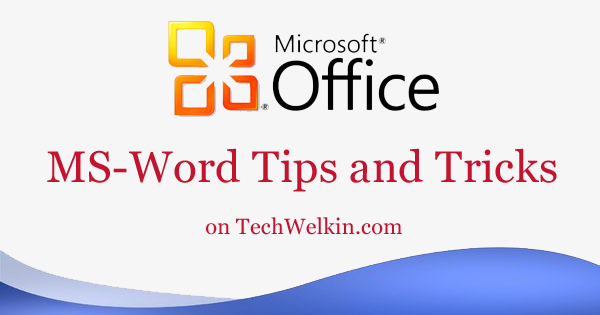You can make macros in two ways. If you just want MS Word to track and record your actions, you can Record a Macro. Secondly, if you need to write more complex instructions, you can program a macro. Let’s look at both of these options. MS Word (and all other software in MS Office package) allow you to record your actions and then execute them as a single command. Before you begin recording of a macro, I would suggest that you become very sure what you want to do and how you want to do because every action of your will be recorded in macro. Let’s understand it by an example: Macro will record all these steps. You can not remove step 4 and 5 from the macro recording. When you will run this macro, you’ll get all the desired result but macro will also go through step 4 and 5… that is to say that the macro will make the same mistake as you did and then it will correct the mistake just the way you did. Did you get the point? Once you start recording a macro, ALL of your actions are recorded irrespective of whether they are wrong or right. That is why you it is better to decide what exactly you want to record. If macro recording is going to be long, it is advisable that you practice the steps to perfect them before beginning the recording. To record a macro, open the MS Word document and go to View menu. There you’ll see Macro option. Clicking on this will give you option to Record Macro. When you choose to record a macro, MS Word will ask you to give the macro a name. This name will identify the macro for running it. Once recording is done, go back to View > Macro > Stop Recording to end the recording. Having done with recording, now it is time to see how your new macro works. Go to View > Macro > View Macros Macros box will open. Select the name you’ve just given to your macro. And then click the Run button. You’ll see that MS Word will execute all the actions that you had recorded. If you’re a programmer, you can also write more complex instructions to be executed as a macro. But first, you may want to see an example. With VBA macro for MS Word, for example, you can do multiple find and replace operation in one go. Now here is how you can write a VBA macro: In order to write a Visual Basic program to run in MS-Office packages (like Word, Excel, PowerPoint, Access etc) you need an editor. Microsoft has provided you with one. To bring this editor to the fore take the following steps. Here I assume that you are working in MS-Word. In Word 2007 and above, click on the Office button (round orb like button in top left corner) and then click on the Word Options button given at the bottom of the menu. A dialog box will appear. Go to the Popular tab and select the “Show Developer tab in the Ribbon” check box. Click OK. SEE ALSO: My compilation of MS-Word Tips and Trick Now on the ribbon, you will see Developer tab. Go to this tab and you will see a button to launch Visual Basic Editor. In the Editor, you can start a new module and write your code in there. Then save the module. Remember, VBA modules created in Word are saved as documents. Once you have written and saved the module, you can run it by opening the saved document and going to the View tab on ribbon. Then go to Macros button and select View Macros. A list of macros associated with the document will appear and you can select and run the macro you desire. This was all the basic information about how to record, write and run a macro in MS Word. Please let me know if you have any question about this topic. I will be glad to try and help you. Thank you for using TechWelkin! Comment * Name * Email * Website
Δ
